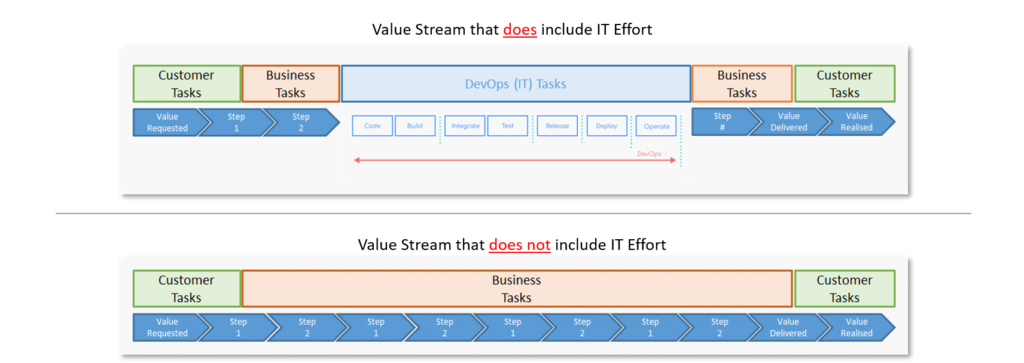Just as the Agile Manifesto was created to align software development, DevOps was created to align software delivery and ITIL®4 was created to align the whole of IT. Businessagility.works® has been designed to align the entire organisation.
High-velocity IT, using Agile Software Development, DevOps and IT Service Management shifts the bottleneck of work from IT back to the Business.

For this reason, the businessagility.works® framework was designed to specifically focus upon the wider organisational challenges that limit end-to-end flow. From the customer – to the customer, whether going through IT, or not.

Whilst businessagility.works® does not refer to the Agile Manifesto, DevOps nor any specific IT practices, it is perfectly compatible with an IT organisation this ‘is agile’, or high-velocity. Our basic organisational unit, the Agile Team could contain IT functions, non-IT business functions, or a cross-functional combination.
In addition, we do not specify the adoption of any one agile technique. If an Agile Team wishes to utilise Scrum as the way to manage their IT, or non-IT development work, they are free to do so. It is the alignment of the organisation through end-to-end value streams that is the focus of our framework, not individual techniques.
Summary
Ultimately all agile/high-velocity frameworks and methodologies share a common purpose. To shift the focus from shareholders, or internal goals towards customer-centric goals. Increasing agility/speed is simply a means to achieve a common objective, and that objective is to maximise customer value quickly, consistently and sustainably.
- Business Agility evolved from DevOps,
- DevOps evolved from Agile Software Development,
- Agile Software Development evolved from Lean,
- Lean evolved from JIT Manufacturing,
- JIT Manufacturing evolved from PDCA,
- PDCA evolved from PDSA,
- PDSA evolved from Scientific Management,
- and so on…

